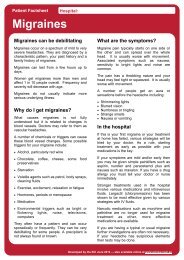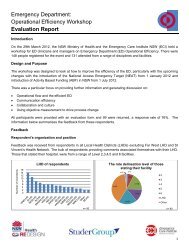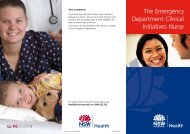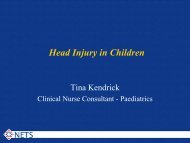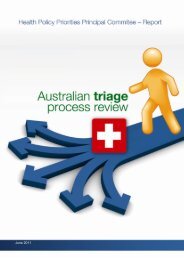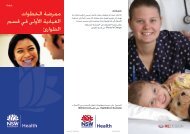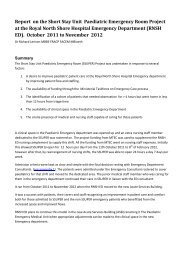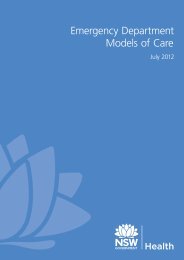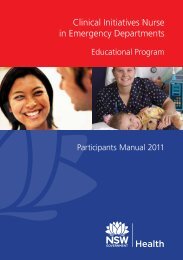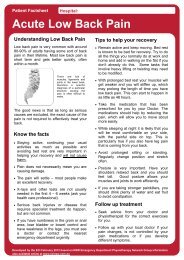Facilitators Manual - Emergency Care Institute
Facilitators Manual - Emergency Care Institute
Facilitators Manual - Emergency Care Institute
Create successful ePaper yourself
Turn your PDF publications into a flip-book with our unique Google optimized e-Paper software.
ConditionSigns and SymptomsGoals of treatment(this may differ at each facility)• Airway management.• GCS.• Vital signs.• Medical assessment.• CT scan.• Close ongoing neurological assessmentIntracranialhaematomaReduced level of consciousnessPresence of a skull fractureSub-arachnoidhaemorrhagePatients usually complain of “the worstheadache of my life” or “thunderclap”headache. Commonly associated symptomsinclude nausea and vomiting, neck stiffness,and photophobia. Patients who present withstupor or coma are at high risk for mortality.• Airway management.• GCS.• Vital signs.• Medical assessment.• Management of hypertension.• +/- Surgical intervention• CT scan.• Close ongoing neurological assessmentMeningitisMeningitis and septicaemia (blood poisoning)are not always easy to recognise, and symptomscan appear in any order. Some may notappear at all. In the early stages, the signs andsymptoms can be similar to many other morecommon illnesses, for example flu.Early symptoms can include fever, headache,nausea (feeling sick), vomiting (being sick), andmuscle pain, with cold hands and feet.• Airway management.• GCS.• Vital signs.• Medical assessment• Close ongoing neurological assessment.21Sinusitis• Pain or pressure behind the eyes/across thecheek bones/forehead/bridge of the nose.• Headache.• +/-Fever.• Nasal discharge.• Analgesia.• GCS.• Vital signs.• Medical assessment.• Antibiotics.• Hydration.• Close ongoing neurological assessment.Headache Throbbing in head. • Analgesia.• GCS.• Vital signs.• Medical assessment.• +/- IV fluids• Close ongoing neurological assessment.Migraine• Intense throbbing headache, often on oneside of the head only.• Visual disturbances (blind spots, distortedvision, flashing lights or zigzag patterns) –these symptoms are often called aura.• Nausea and or vomiting or diarrhoea.• Increased sensitivity to light (photophobia).• Increased sensitivity to sounds (phonophobia).• Increased sensitivity to smells (osmophobia).• Stiffness of the neck and shoulders.• Analgesia.• GCS.• Vital signs.• Medical assessment.• +/- IV fluids.• Largactil.• Anti emetic if vomiting.• Close ongoing neurological assessment.




